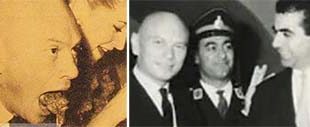The Fedora in Iran
While the fedora was popularizing in the West, a parallel but politically charged evolution of headwear was taking place in Iran. The adoption of the fedora-style hat in Iran coincided with the rule of Reza Shah Pahlavi, who reigned from 1925 to 1941. As part of a broad campaign to modernize and secularize Iranian society, Reza Shah introduced numerous reforms aimed at reducing the influence of religious customs in public life.
One such reform involved standardizing male clothing, and this included a change in headgear. The traditional Qajar-era hats were replaced with Western-style brimmed hats, closely resembling the fedora. In 1306 in the Iranian calendar (equivalent to 1927–1928), the use of the chapeau, often locally called shapo, became mandatory for men in public. The next year, in 1307, this policy was approved by the Iranian parliament, further cementing its legal and cultural significance.
Yet the reform was far from universally accepted. Protests erupted, and many saw the mandate as an affront to Islamic values and national identity. Statesmen like Mohsen Sadr, then deputy minister of justice, openly opposed the change, arguing that it represented an unnecessary and culturally invasive break with Iran’s traditions. The hat had become more than a piece of clothing—it was a symbol of modernization, and for many, a symbol of unwanted Westernization.

